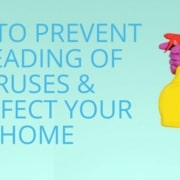How Carpet Cleaning Can Improve Indoor Air Quality
Carpets frequently trap bacteria, dust, allergens, and other pollutants that affect indoor air quality and could potentially make you sick. Many people are unaware of the significant role carpet plays in determining the quality of indoor air, and ultimately lack knowledge on how to properly clean and maintain their carpet.
If you’ve recently moved into a new home with pre-existing carpet, there’s no telling what pollutants are lying beneath you. Some of the most common types of impurities found in carpet include dust mites, particle pollution, pet dander, cockroach allergens, lead, and dirt. Taking a few necessary steps will reduce these pollutants while improving your indoor air quality.
Vacuum weekly
It’s crucial that you stay on top of carpet maintenance. If you opt to do it yourself, it’s best to vacuum the entirety of your flooring on a weekly basis.
Use a quality vacuum cleaner
Make sure you are using a high-quality vacuum that is equipped with a High Efficiency Particulate Air (HEPA) filter.
Deep steam clean your carpet
Regular cleaning and maintenance of your carpet not only improves the appearance, but ensures that you and your loved ones are living in a safe and healthy environment.
Remove carpet from bathrooms & kitchen
If possible, kitchens & bathrooms should remain carpet free in order to prevent mold growth in areas that water is prevalent.
Keep your home well ventilated
Keeping humidity levels below 51 percent will reduce the occurrence of dust mites, and making sure the home is well ventilated can help improve air quality vastly.
Many of us spend the majority of our time indoors, yet we seldom reflect on how this might be negatively affecting us. Follow these tips to help reduce pollutants in your home, making your indoor air cleaner and helping you breathe easier!





